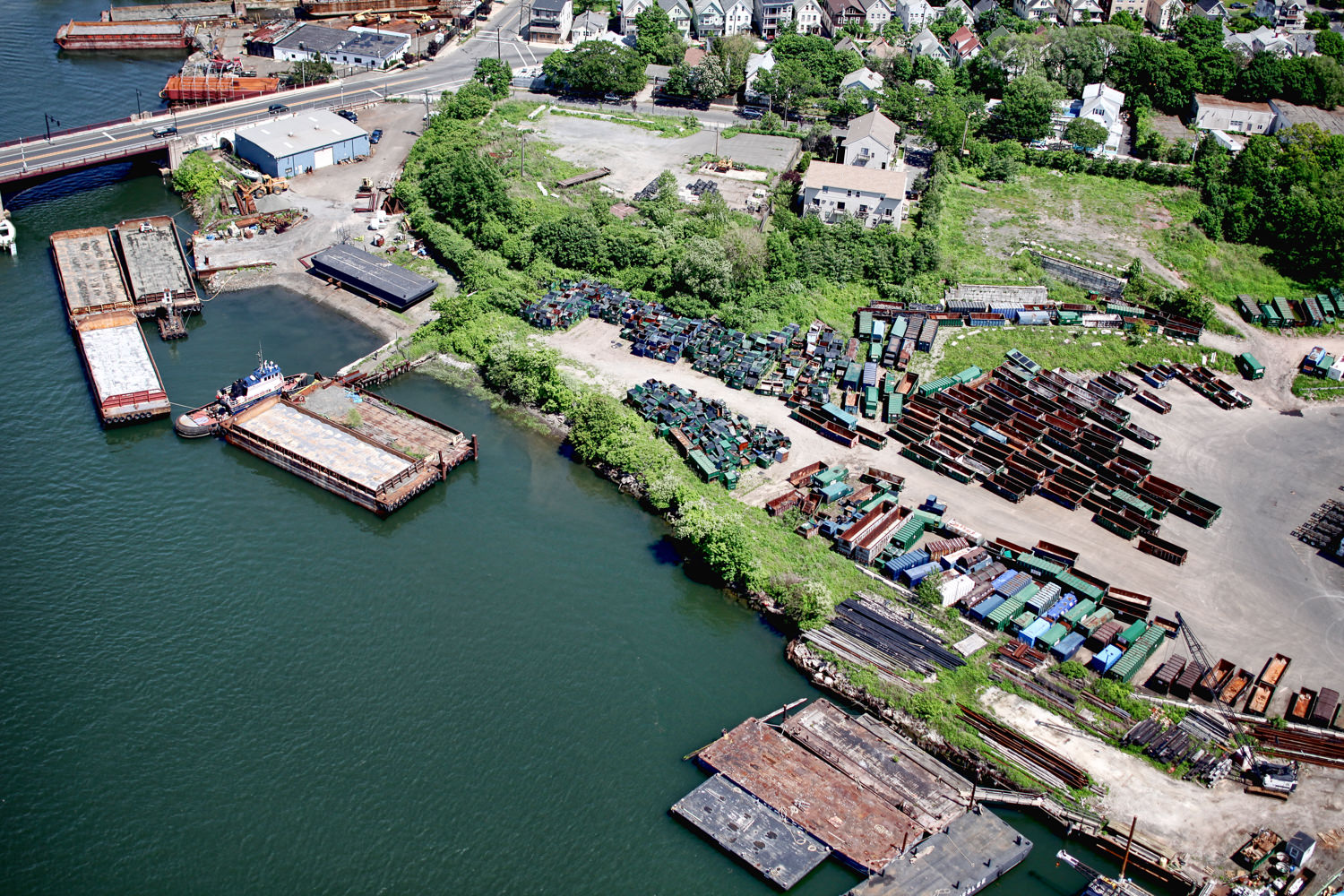UCONN researcher studies oyster reefs in Quinnipiac River and Morris Creek
The creek was said to be dead. Industrialization and decades of pollution took its toll on many Connecticut rivers and tributaries, including Morris Creek which empties into New Haven harbor in Lighthouse Park. But when UCONN researcher Dr. Zofia Baumann visited the area in June 2016 to scout locations for mercury testing in fish and oysters, she discovered vibrant life normally hidden beneath the current. Clusters of thin, sharp oblong shells rose from the muddy creek bed. Zofia had read about such oyster reefs and seen them in environmental shows, but had never encountered them in nature.

Dr. Zofia Baumann found inspiration in the Morris Creek oyster reefs
The scene captivated Zofia and inspired her to learn more about eastern oysters, their history along the Connecticut coastline, and the parameters that help them thrive. With support from the Quinnipiac River Fund, Zofia launched a project to track to measure oyster size, reef density, as well as the water quality variations in oyster habitats, focusing specifically on Morris Creek and the Quinnipiac River.
“By studying where we know oysters are happy, we can help restoration efforts and hopefully continue to see a resurgence in the population of oysters and other marine life,” explained Zofia.
Zofia chose Morris Creek based on its ecology and current use. As a tidal creek, Morris Creek offers a welcome environment for oyster reef formation, including a mix of salt and fresh water; a muddy bottom, shelter from large waves and adjacent salt marshes which provide added protection and filtration. Additionally, the Creek offers protection from human disturbance because both commercial and recreational harvesting is prohibited by the Bureau of Aquaculture.
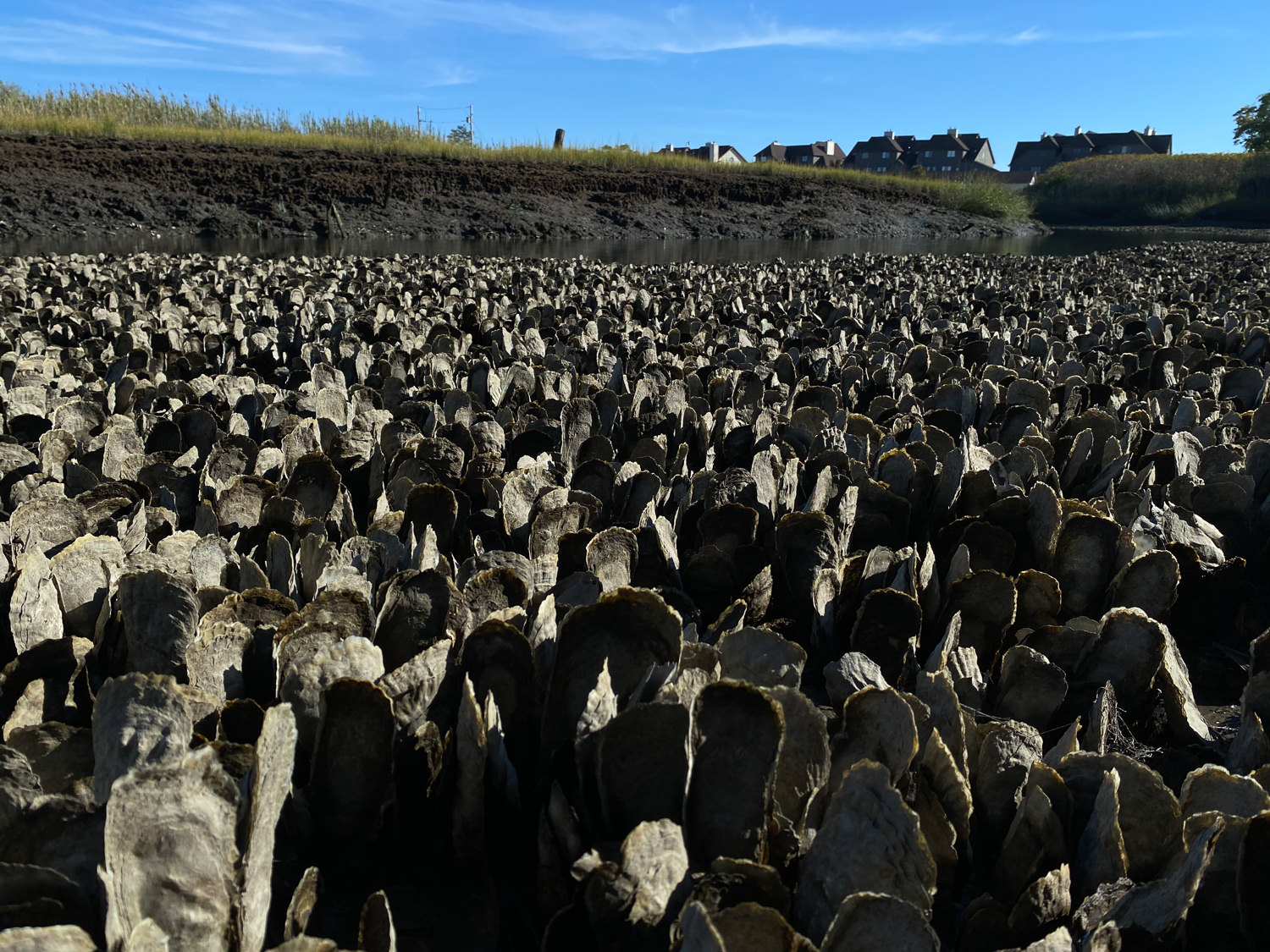
With more tributary rivers per linear coastline mile than any other region in the country, Connecticut offers an ideal environment for oysters to flourish. And indeed they have for centuries. Both abundant and accessible, oysters became a staple in the diet of shoreline indigenous people, and later a valuable source of food and trade for the European settlers in the area. As Connecticut oysters made their way to tables all over the world — including the plates of England’s royalty — their renown grew rapidly.
Consumed and harvested in great quantities, overfishing began depleting oyster beds and spurred the creation of laws regulating their taking. In 1762 New Haven made it illegal to take oysters during their summer spawning months and then, in 1766, the town outlawed dredging.
Increasing demand and dwindling oyster beds inspired a new era of oyster cultivation. In the 1820s, Connecticut oystermen began gathering free-swimming larvae and planting them on artificial beds made of oyster shells where, in 18 – 24 months, they grew into maturity.
By the end of the century, oyster farming in Connecticut peaked with more than 15 million bushels in a single year, but soon faced bigger challenges. As industry and shoreline development increased, heavy metals and raw sewage drained into the waterways at unregulated and alarming rates.
As filter feeders, oysters consume phytoplankton or algae by filtering water in and over their gills. Some adult oysters can filter up to 50 gallons of water a day, providing a valuable environmental service to their habitat. While most unwanted indigestibles leave the oysters in feces, if pollution levels are high, these hard-working shellfish can carry dangerous toxins that can be passed on to humans when eaten.
In 1892, after 29 college students became infected with Typhoid, investigation revealed that all had consumed oysters grown at the mouth of the Quinnipiac, in proximity to a house with two known cases of the fever, and sewage pipes that drained directly into the river. Later, in the mid 1920s, oysters took the blame for another Typhoid outbreak. The bad press, combined with economic depressions, had a quick and drastic impact on the oyster industry. Within a few decades, the oyster industry in Long Island Sound had declined more than 97 percent, producing a mere 40,000 bushels a year.
In 1967, Connecticut’s Clean Water Act brought new hope for the bivalve mollusks. As sewage regulations began to restore water quality, oyster growers sought to revive oyster populations by depositing clean oyster shells on old oyster grounds in estuaries and rivers where oysters once thrived.
Decades later, such cultivation continues to contribute to oyster’s resurgence. Despite a drastic setback in the late 1990s, when a water temperature spike bloomed naturally occurring parasites that destroyed 80 – 90 percent of the state’s oysters, Connecticut is on its way to reclaim its former oyster fame, a benefit to the environment and foodies alike.
Leading the charge in New Haven and Fairfield County is Copps Island Oysters, a fourth-generation, family-owned shellfish farm. Copps Island leases rights to acclaimed oyster grounds throughout Long Island Sound, as well as many historically oyster rich rivers, such as the Quinnipiac. Committed to protecting Connecticut’s waters and helping once defunct oyster habitats thrive, Copps Island proactively invests in areas where harvesting is still prohibited such as Morris Creek. In July 2012, the company laid clean shells in the Creek, which catalyzed the reef’s re-propagation.
Though oysters are now plentiful in Morris Creek, harvesting there remains prohibited due to the unavailability of current sanitary surveys or the potential of pollution sources that could cause a public health risk.
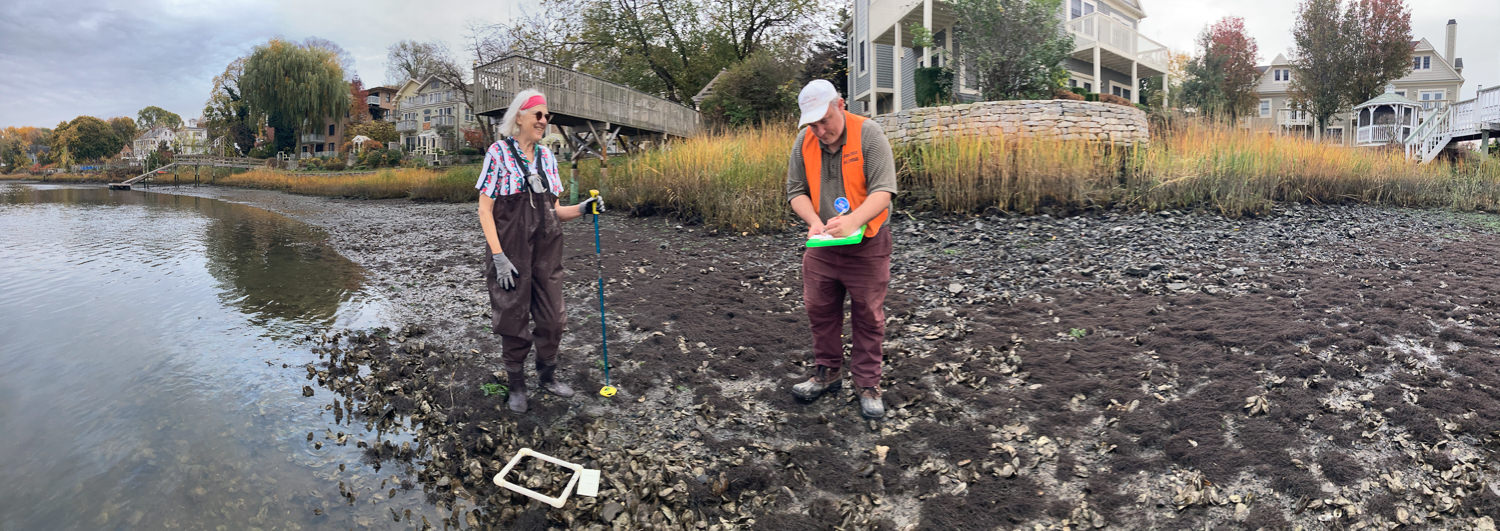
Lynn Bonnett and Aaron Goode of the New Haven Bioregional group assess quantity and sizes of living and dead oysters in Quinnipiac’s intertidal zone
Zofia knew that successfully monitoring Morris Creek oyster health was not a one-woman job. She enlisted the support of many collaborators including Dr. Mary Beth Decker, research scientist from Yale School of the Environment; Lynne Bonnett from New Haven Bioregional Group; and Richard Harris, retired scientist with Copps Island Oysters.
Zofia installed water quality data loggers in both Morris Creek and the Quinnipiac to obtain continual measurement of water salinity, oxygen, pH, temperature and water levels. With this data, she is creating a metrics table to document what the oysters experience.
In addition to monitoring, another of Zofia’s project goals was to create public awareness and involvement. To do this, she invited local community members, volunteers and students to Morris Creek — where the oysters are more accessible — to participate in measuring and tracking oyster density, mortality and the presence of juvenile oysters, called spat, in the reef.
On a beautiful Thursday afternoon in October, 16 helpers joined Zofia at the creekside. Donning waders and calipers, they counted and recorded oyster quantity, location and size. The volunteers included 11 students from Sound School’s after school environmental justice program, environmentally-minded citizens, and local neighbors like Barry and Debbie Flynn, who live nearby the creek and came out to lend a hand.
“When our kids were young, we did field trips and a lot of exploring in this area,” Debbie said. “Now our daughter is a marine biologist.”
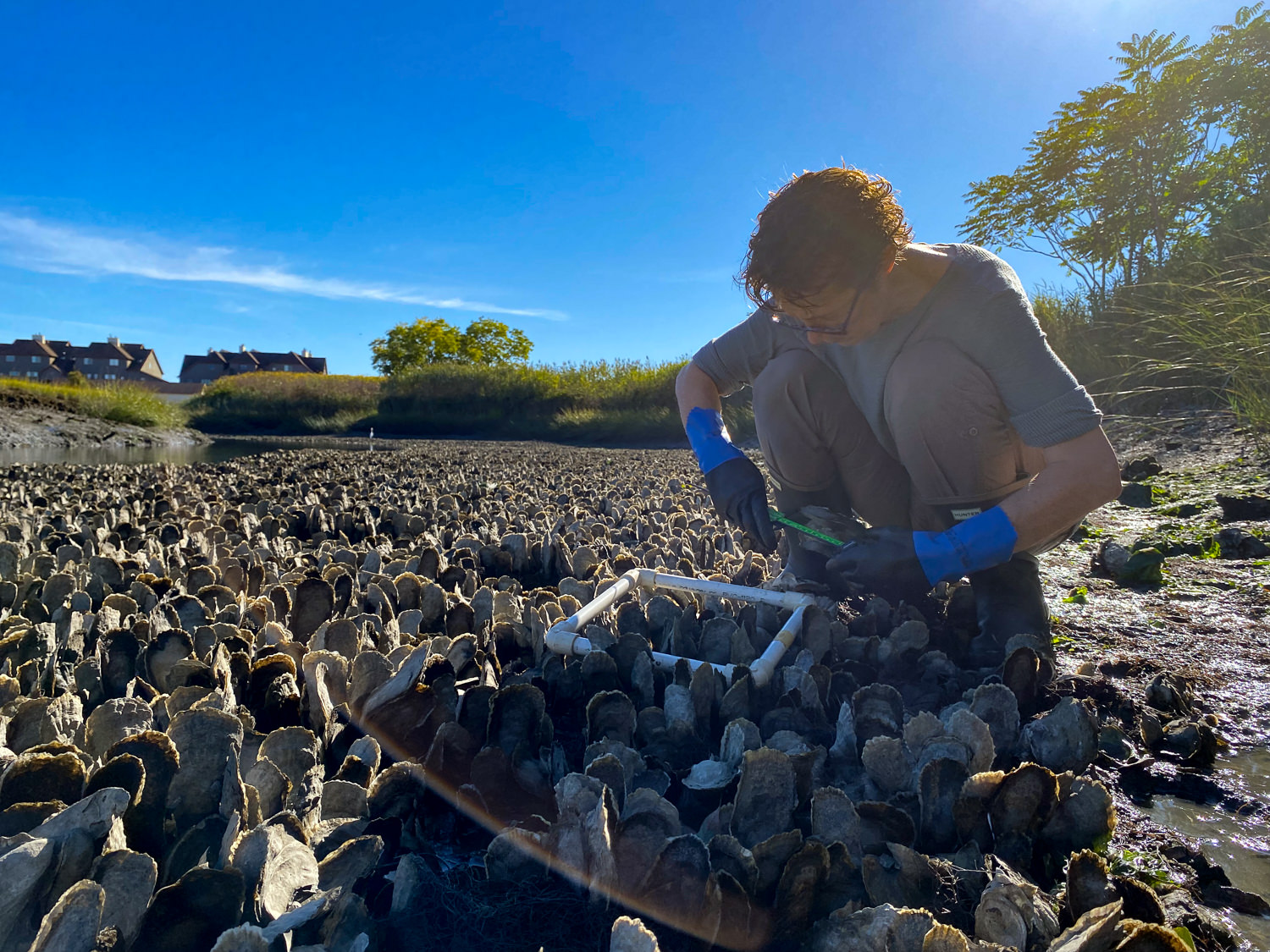
Debbie Flynn measures Morris Creek oyster density with calipers and Quadra
In November, more volunteers joined Zofia for monitoring and measuring on the banks of the Quinnipiac. And for Zofia, the sight of all these intrepid collaborators, trekking through the mud at Morris Creek or gathering on the banks of the Quinnipiac, is perhaps as thrilling as the sight of the reef’s themselves.
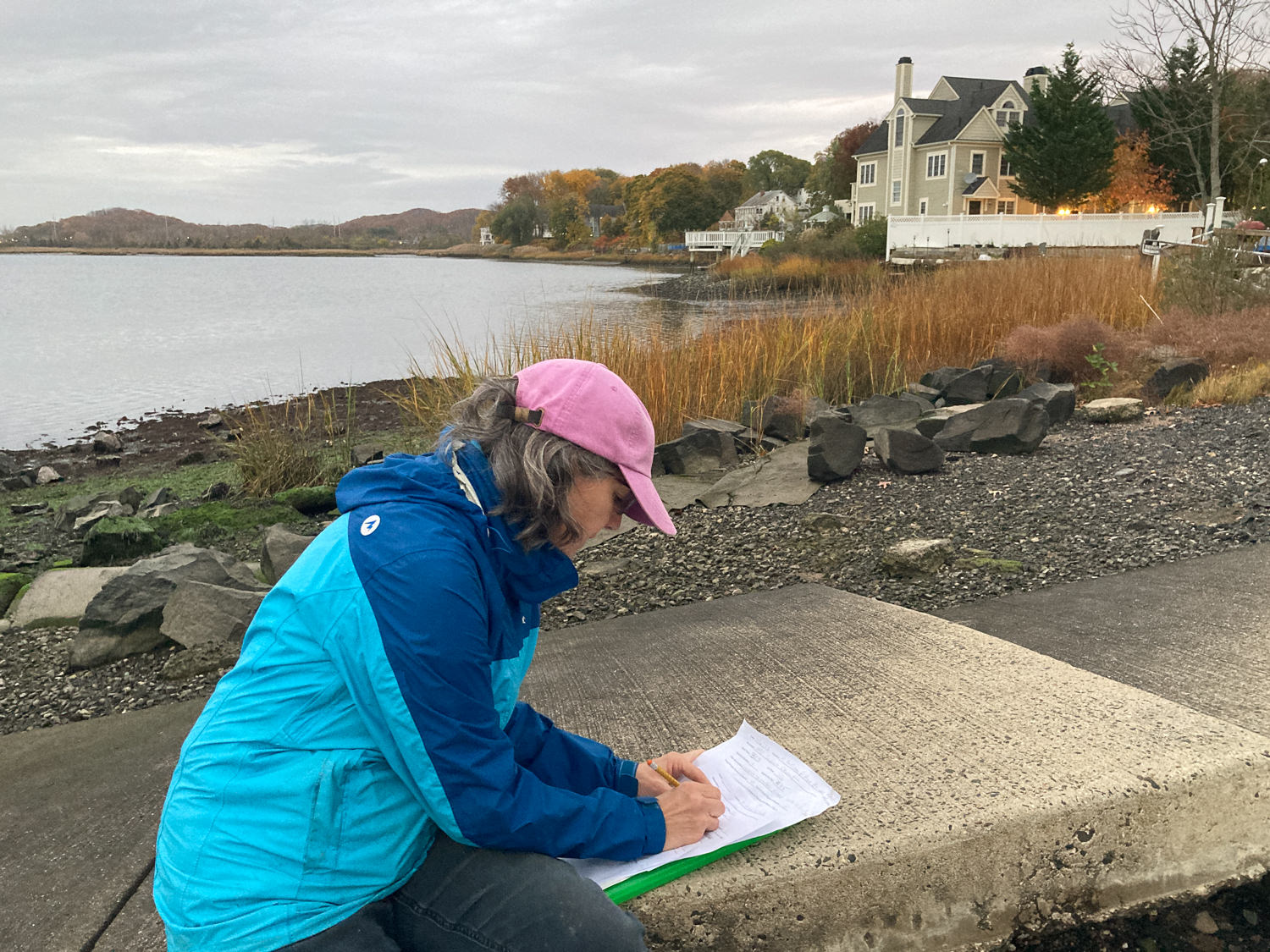
Dr. Mary Beth Decker from Yale reviews oyster data sheets at the Quinnipiac River boat launch on Clifton Street.
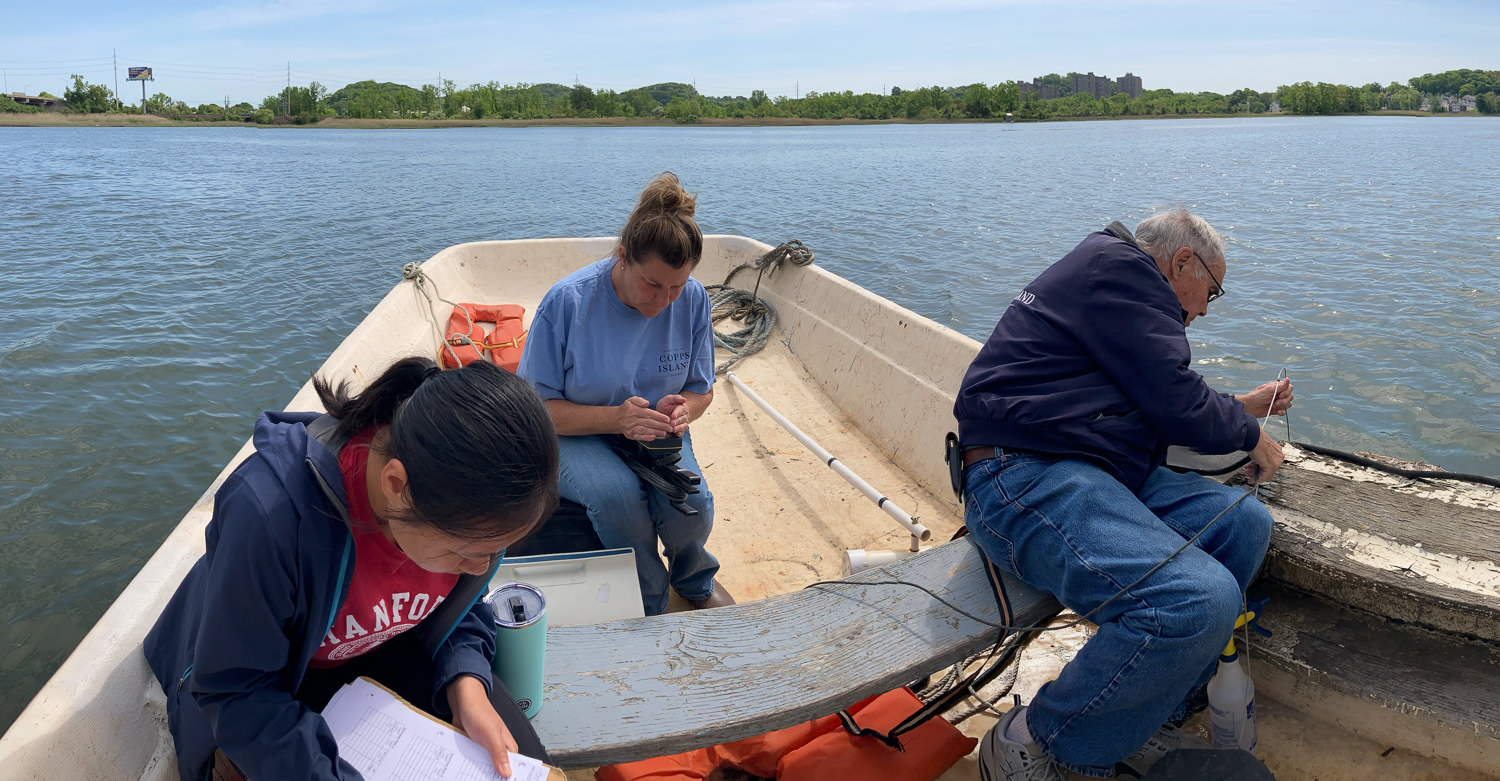
Richard Harris and Christine Griffith from Copps Island Oysters work with Jessica Li, a student from Weston High School, to monitor water quality on the Quinnipiac River.
“To improve environmental issues anywhere, you can’t just rely on the scientific community. We are a limited workforce. We need everyone’s engagement,” Zofia explained. “Once you start doing this work, you feel more connected, you begin caring about the place, and become a better more powerful advocate.”
Leveraging the support of Quinnipiac River Fund, Zofia plans to continue and expand her research with additional grants and partnerships.
Click here for more information on regulations for oyster harvesting and other shellfish.
https://shellfish.uconn.edu/wp-content/uploads/sites/62/2022/06/CTSRG_June9.pdf

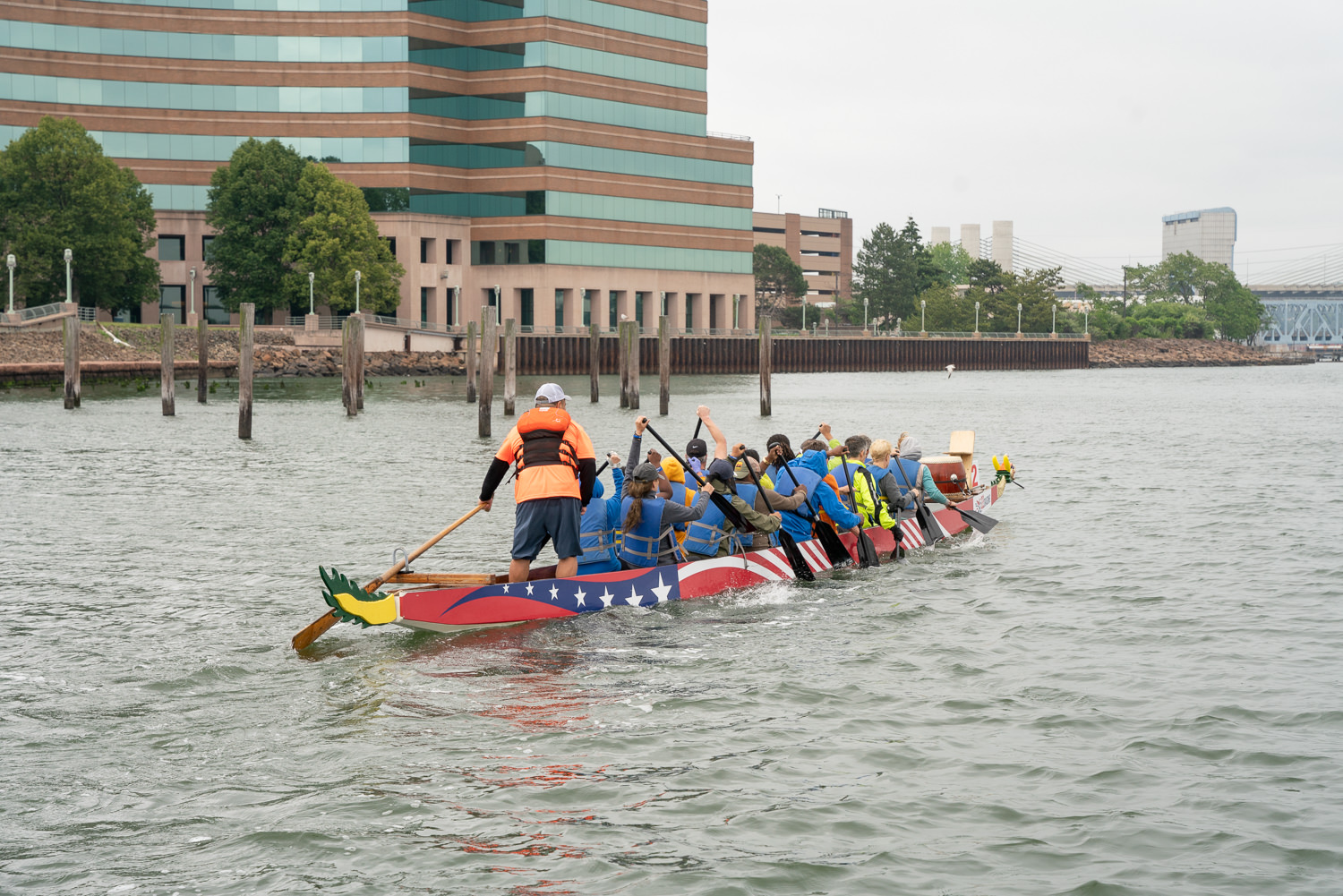
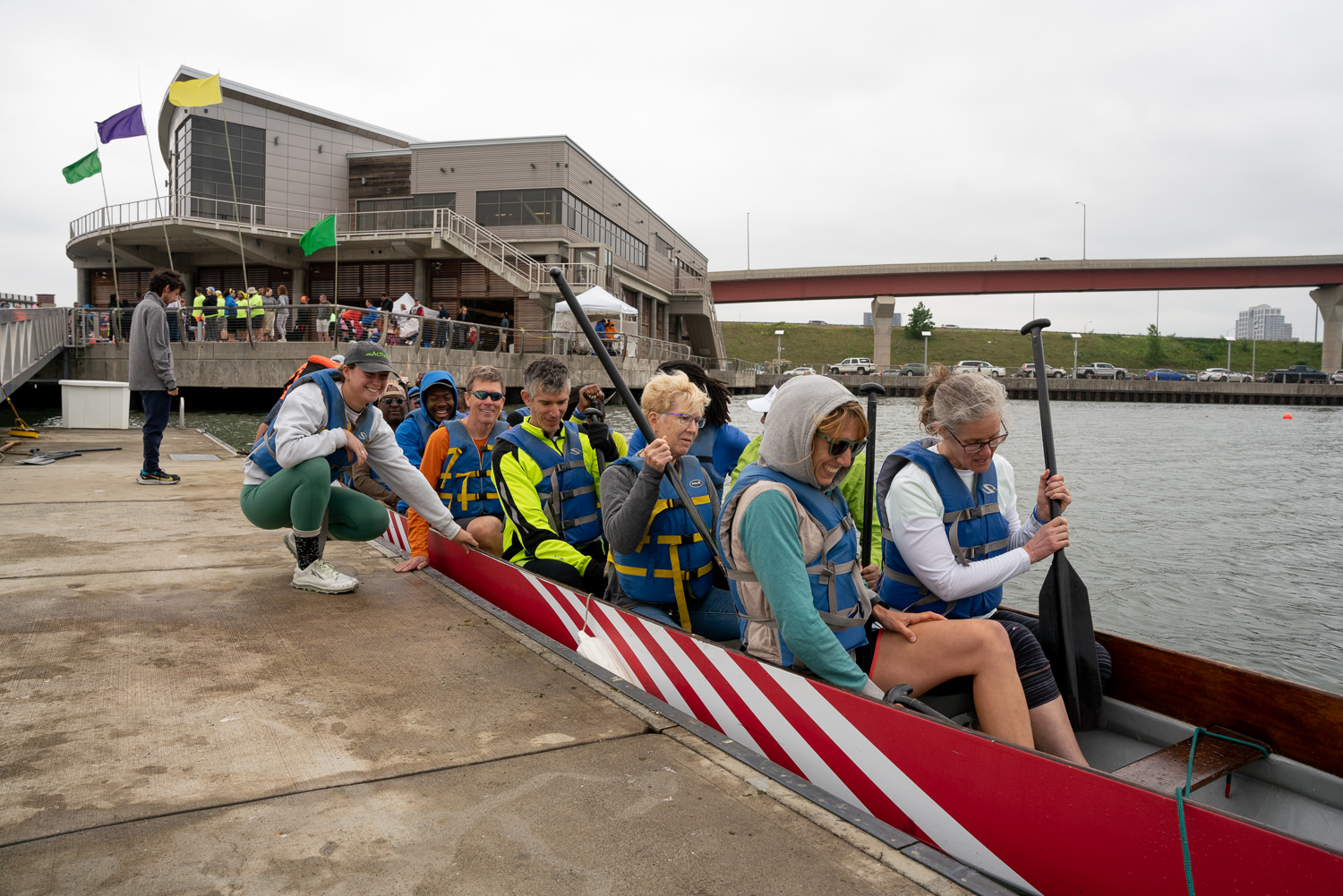


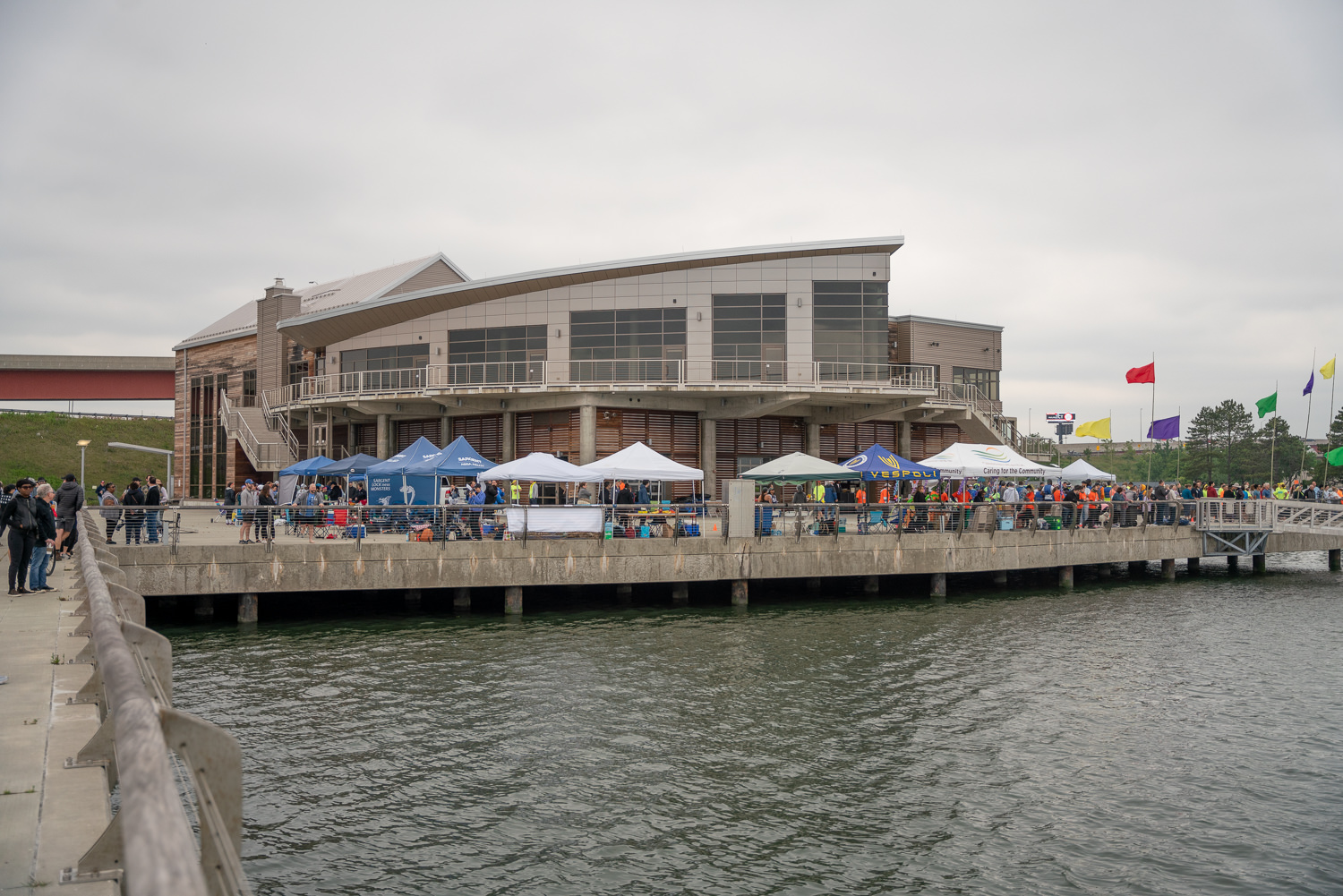
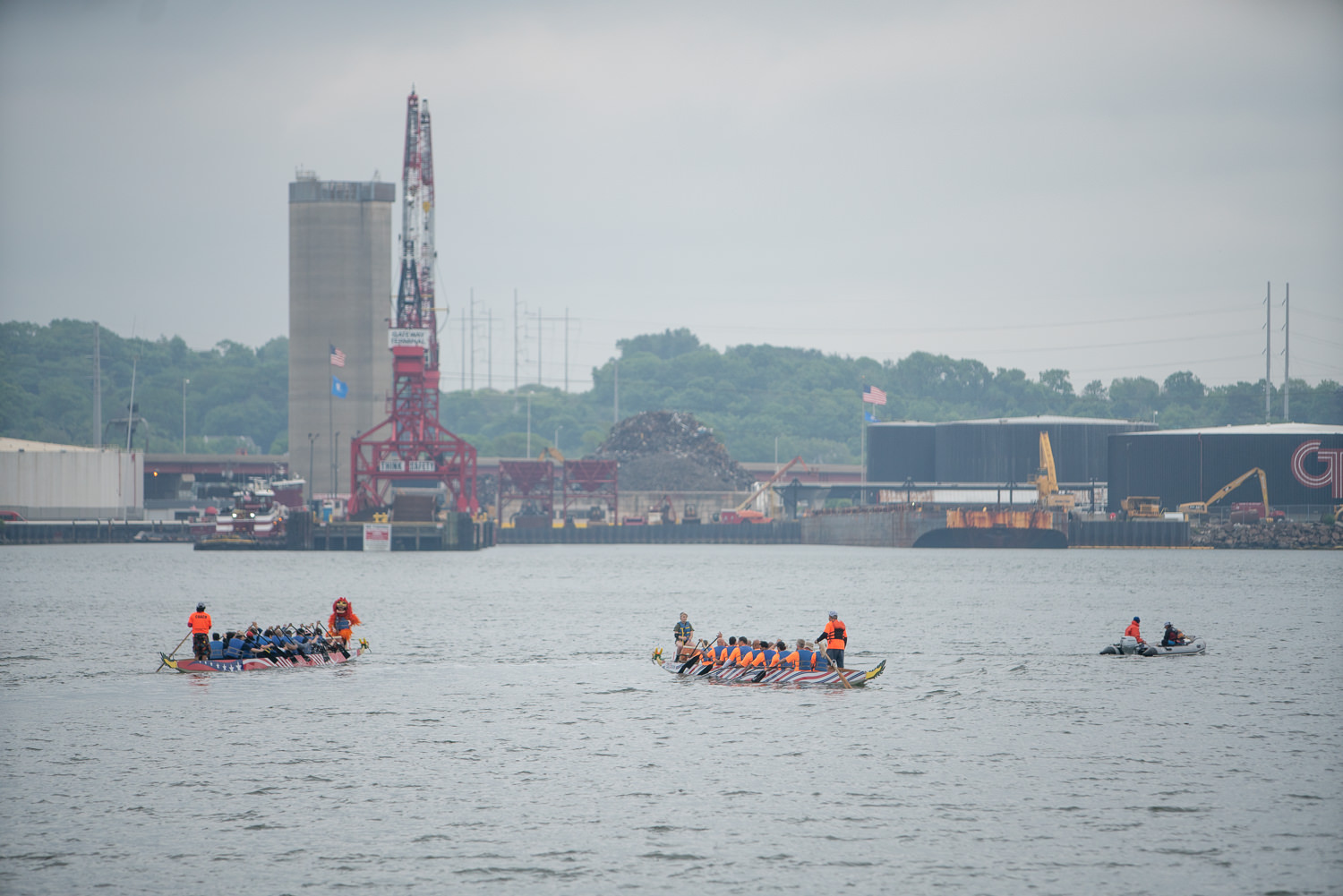











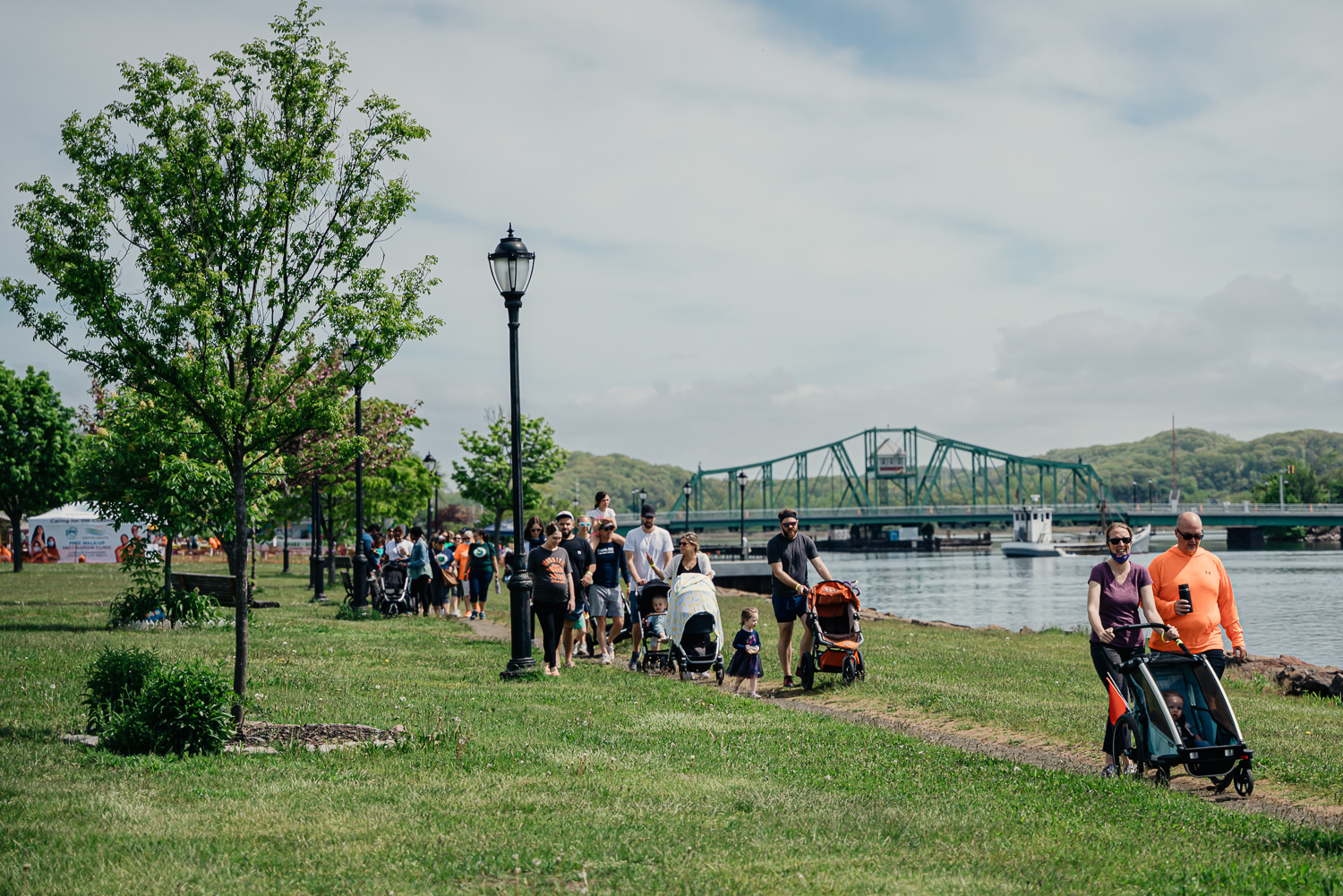







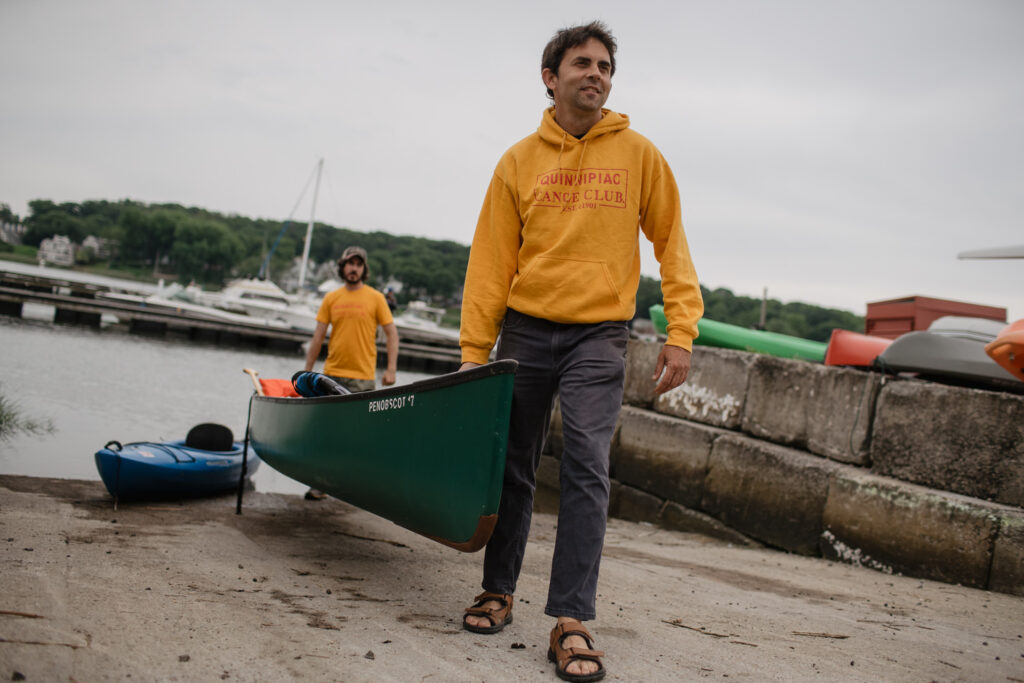
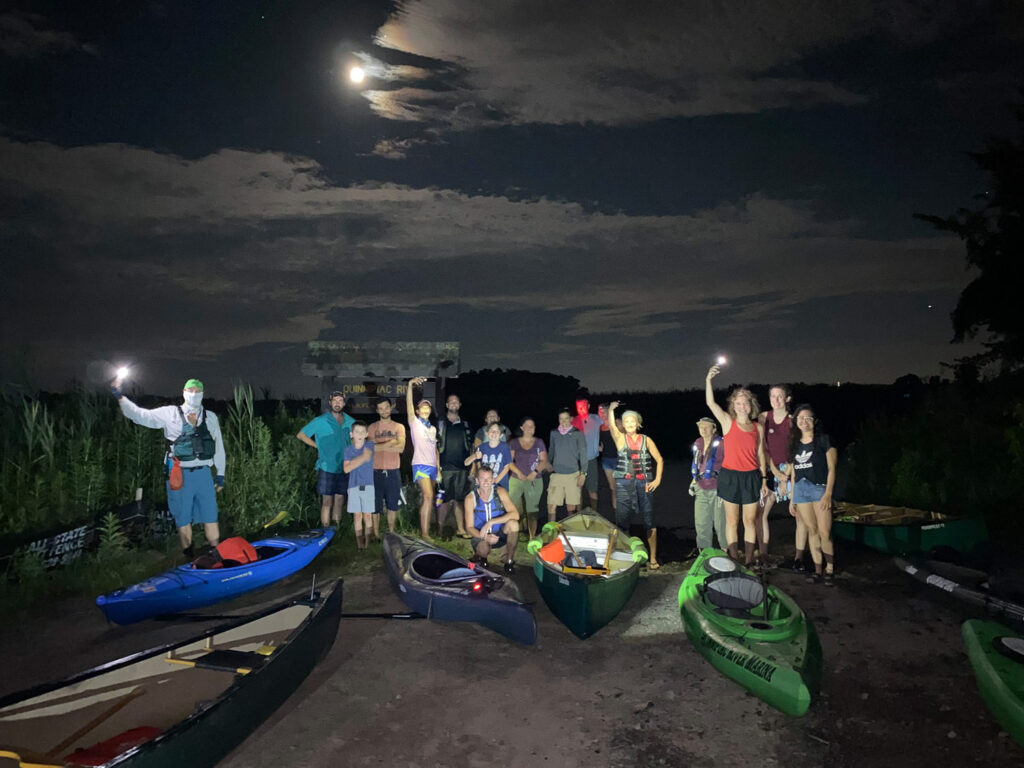
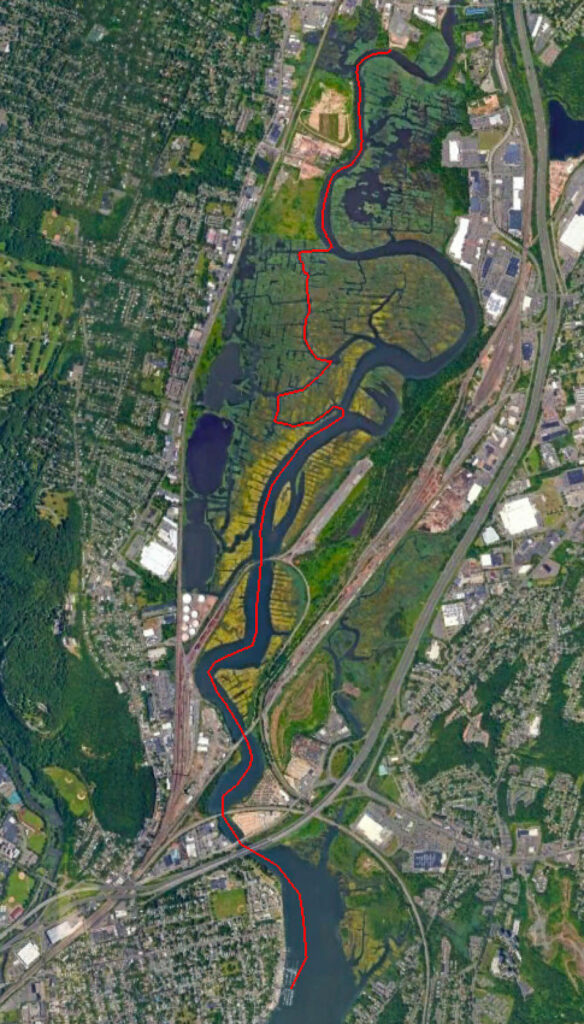
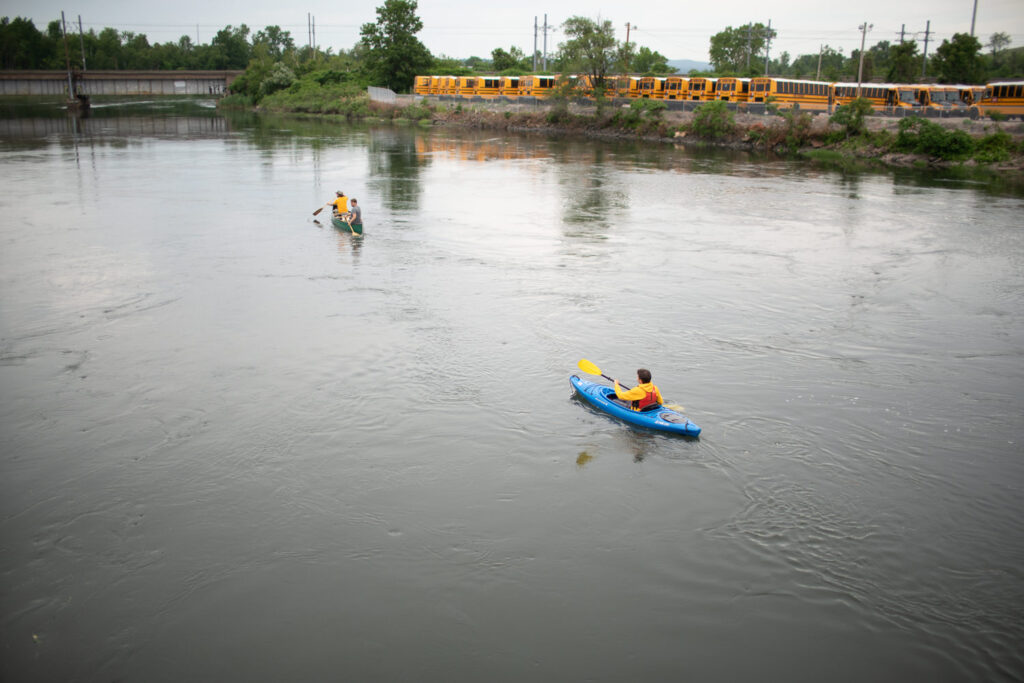
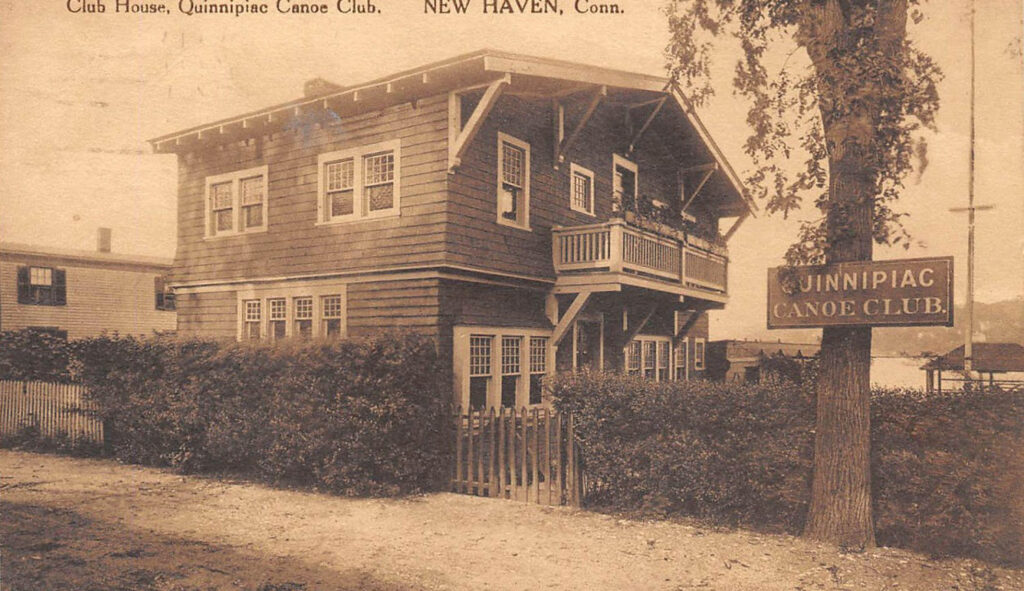
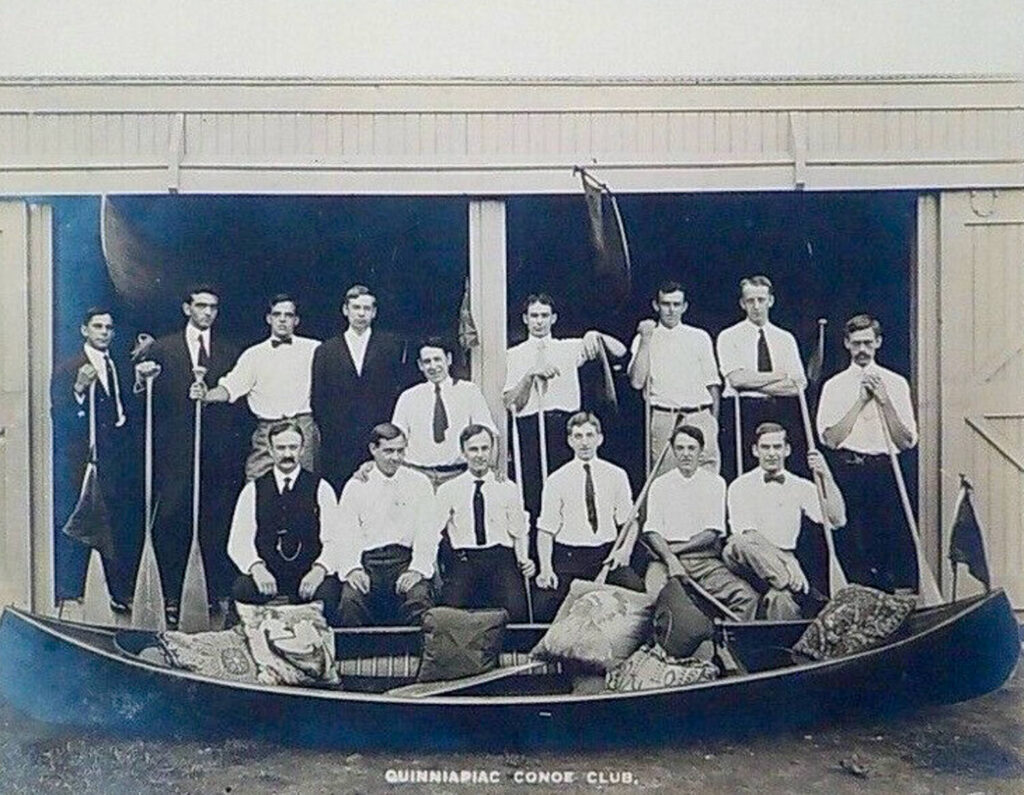
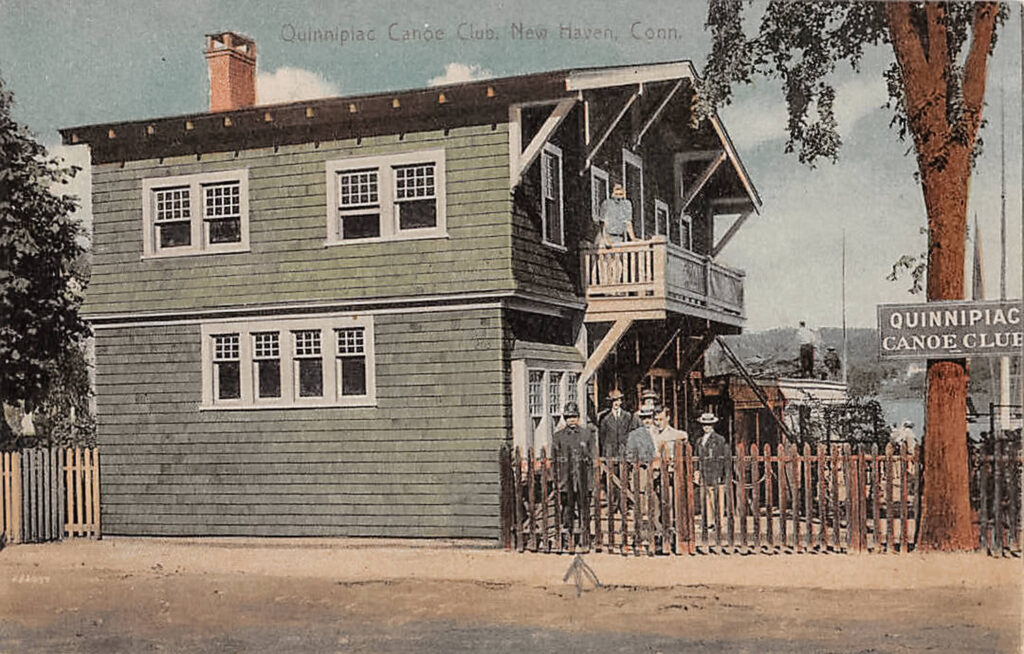
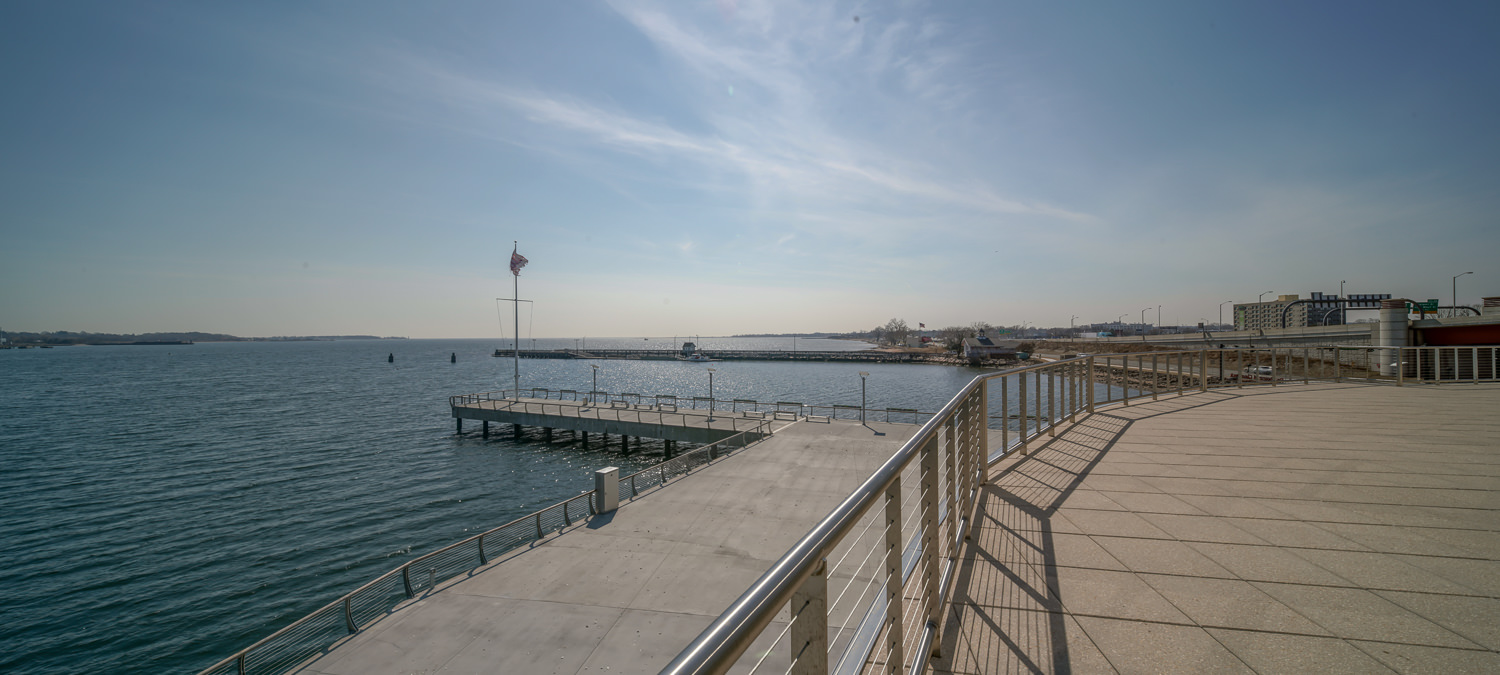

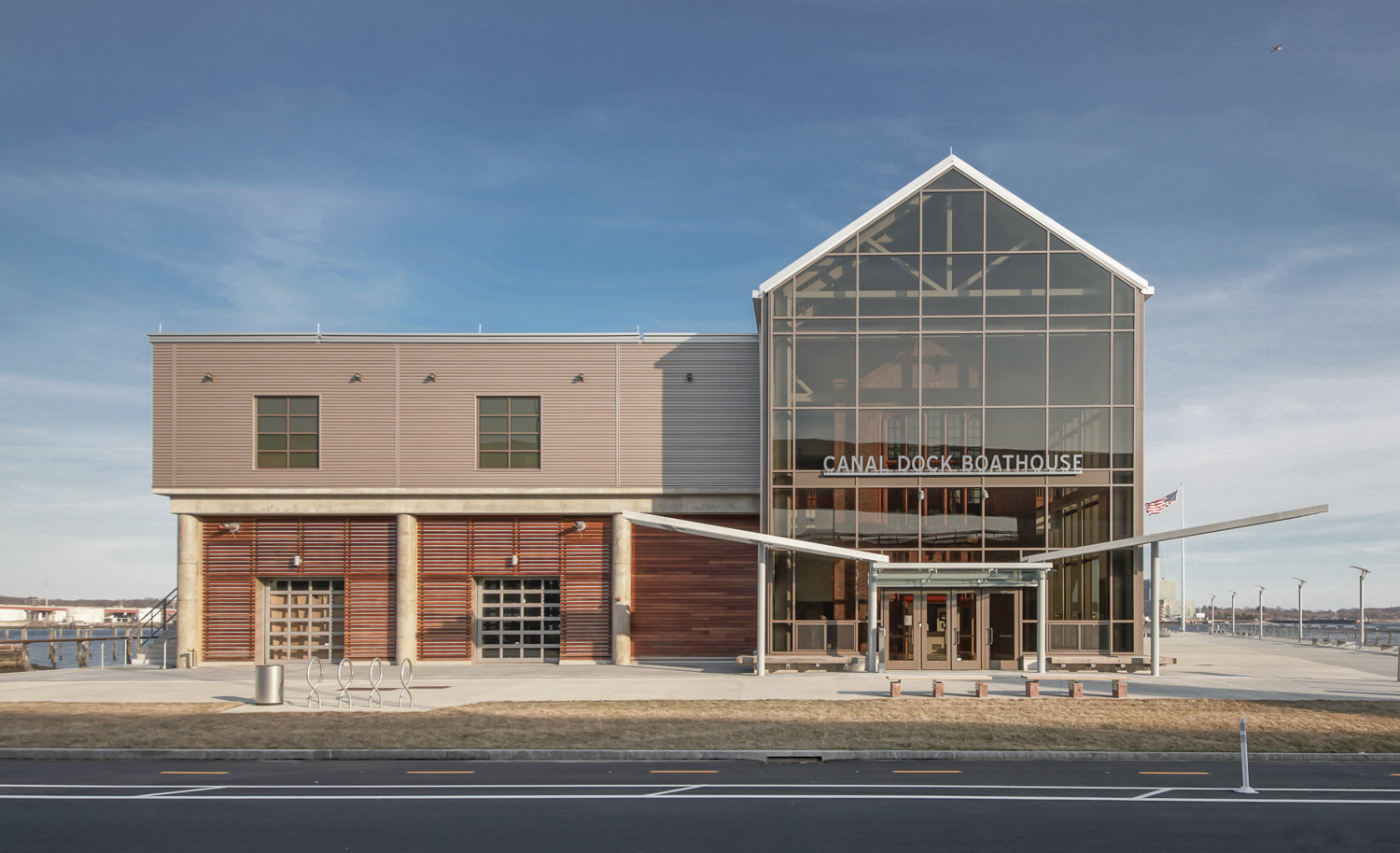 Photograph © Ian Christmann
Photograph © Ian Christmann